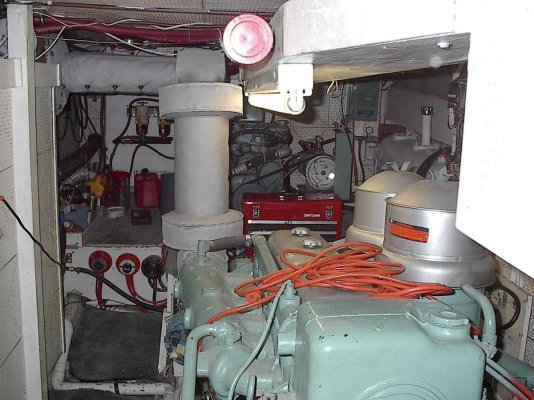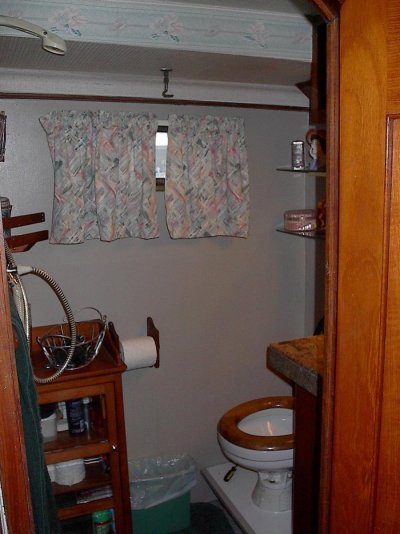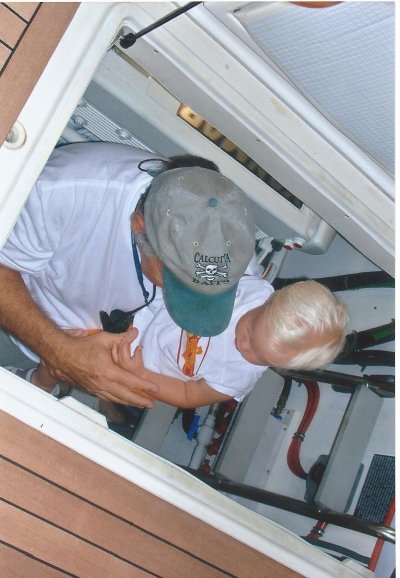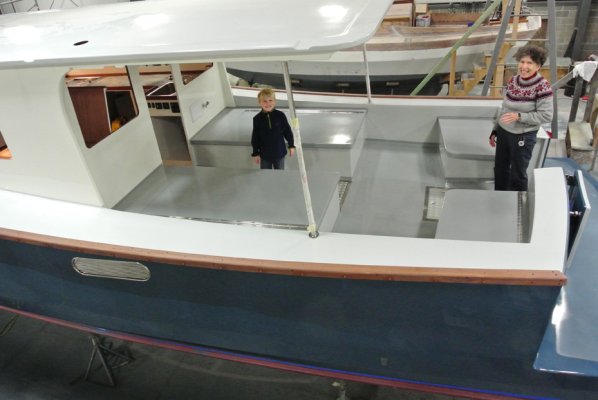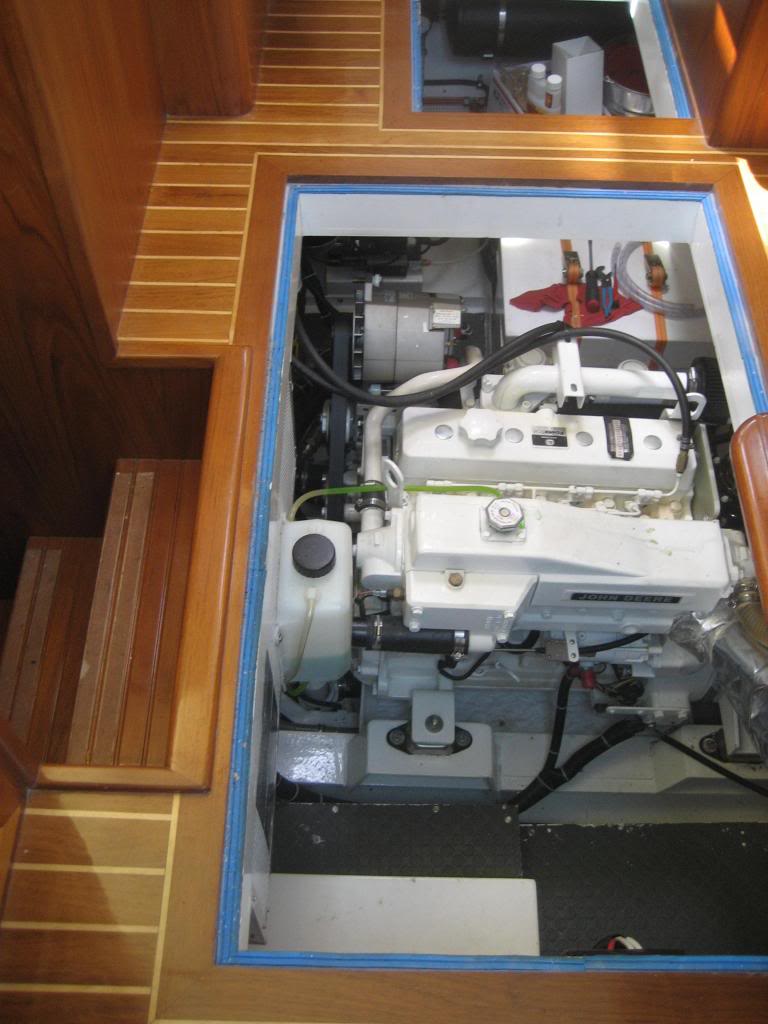Awhile back I posted how a "must have" on our next boat was true and formal engine room access via a separate engine room door. Well the past few weeks have only reconfirmed this decision. Since we had the packing gland adjusted and cut-less bearing replaced on N3522 we have been making afternoon test runs dialing everything in. These runs include Mary driving while I run into the engine room every six minutes to take temperature readings. Having separate access to the engine room provides safe and quiet access while Mary focuses on driving and navigation. I could not imagine having to lift the salon floors only a few feet away from the drivers position to perform this over a two hour period. In addition to this fun I had to replace a fresh water accumulator last night and again found the well thought out engine room with easy access to everything another reason I like formal engine rooms. Despite the N35 engine room being on the smaller side, it works very well. As we continue our search for our next boat we again have formal engine room access and accessibility on the top of our "must have" list and again surprised how many boats this rules out.
Bottom line for anyone looking for a new or used boat it is worth spending some time gaining access and being inside the engine room for awhile. Happy boat hunting.
John T.
N3522
La Tempestad
Bottom line for anyone looking for a new or used boat it is worth spending some time gaining access and being inside the engine room for awhile. Happy boat hunting.
John T.
N3522
La Tempestad



